Hair Rejuvenation Treatment: Revitalizing Your Locks
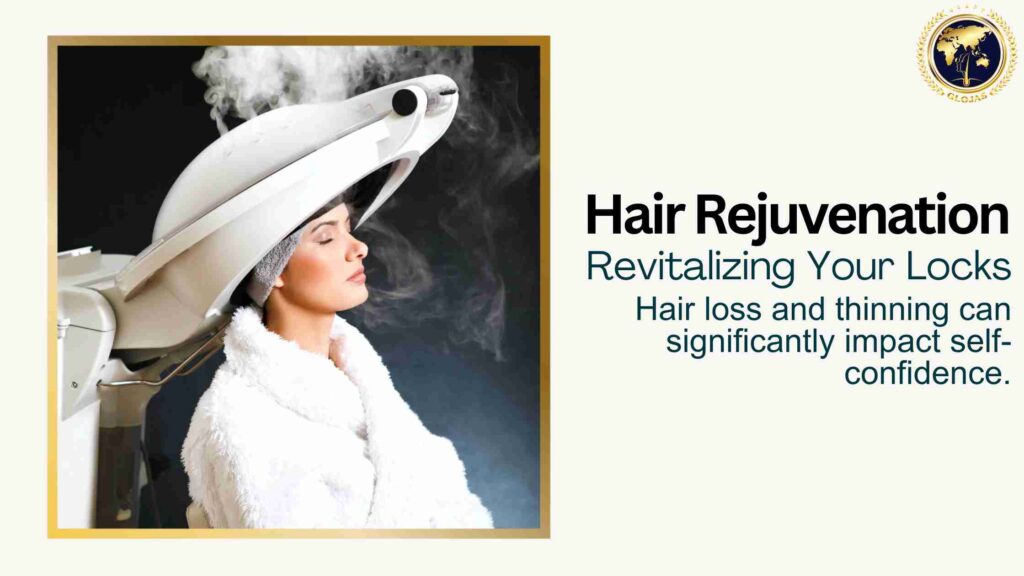
Hair loss and thinning can significantly impact self-confidence. Fortunately, advancements in hair restoration have led to the development of various hair rejuvenation treatments. This blog explores the different options available and highlights the expertise offered by GLOJAS Hair Transplant Clinic. Understanding Hair Rejuvenation: Restoring Hair Health Hair rejuvenation encompasses a range of treatments aimed at stimulating hair growth, improving hair density, and enhancing overall hair health. These treatments typically address issues such as thinning hair, hair loss, and scalp conditions. Common Hair Rejuvenation Treatments Several effective hair rejuvenation treatments are available: Platelet-Rich Plasma (PRP) Therapy: This involves injecting concentrated platelets into the scalp to stimulate hair growth and promote healing. Low-Level Laser Therapy (LLLT): Low-level lasers are used to stimulate hair follicles and promote hair growth. Microneedling: This procedure involves creating tiny punctures in the scalp to stimulate collagen production and enhance hair growth. Choosing the Right Treatment: Personalized Approach The best hair rejuvenation treatment depends on individual factors such as the cause of hair loss, severity, and desired outcome. A consultation with a qualified dermatologist or trichologist is essential to determine the most suitable approach. Why Choose GLOJAS Clinic for Hair Rejuvenation? At GLOJAS Clinic, we understand the emotional impact of hair loss and offer a comprehensive range of hair rejuvenation treatments. Here’s why we stand out: Experienced Dermatologists: Our team of qualified dermatologists specializes in hair loss and offers personalized treatment plans. Advanced Treatment Options: We utilize the latest technology and techniques to deliver effective hair rejuvenation results. Comprehensive Hair Analysis: We conduct thorough scalp assessments to identify the underlying causes of hair loss. Focus on Patient Well-being: We prioritize patient comfort and satisfaction throughout the treatment process. Holistic Hair Care Approach: We offer a combination of treatments and lifestyle advice for optimal hair health. Hair loss can be a challenging experience, but with the right treatment and support, you can regain your confidence and achieve healthier, thicker hair. GLOJAS Clinic is dedicated to helping you achieve your hair goals. Schedule a consultation with our team today. We can assess your hair condition, discuss treatment options, and create a personalized plan to help you rejuvenate your hair. Don’t let hair loss define you – take the first step towards healthier, fuller hair with GLOJAS Clinic! Facebook Twitter LinkedIn Reddit Pinterest WhatsApp
Revolusi Rambut Anda Dengan Rawatan Tanam Rambut
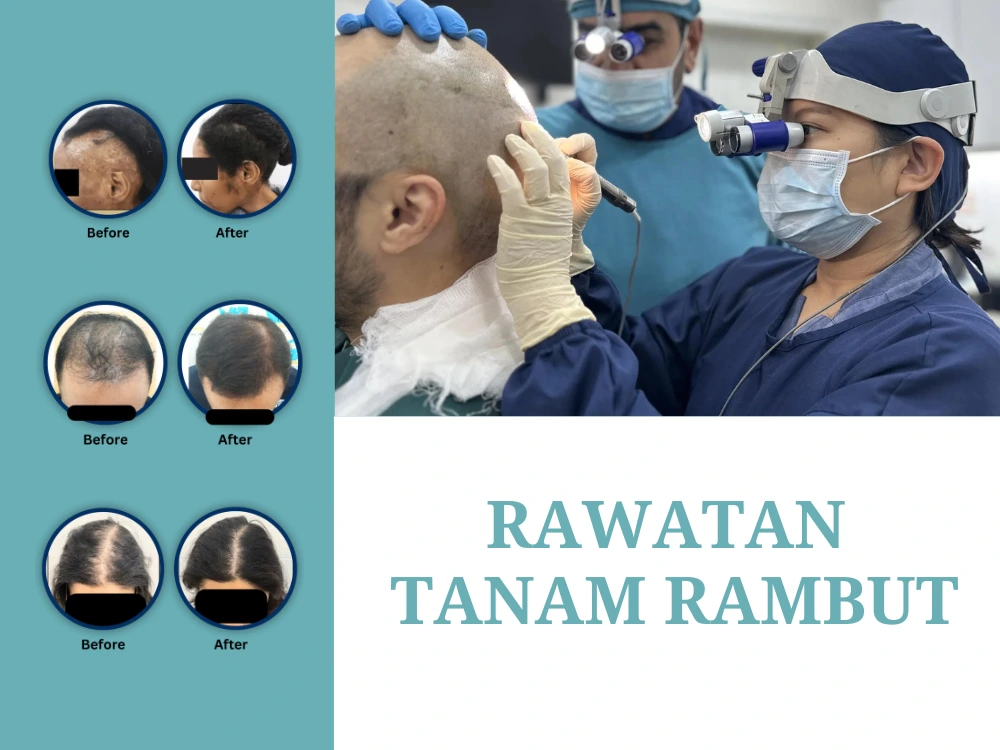
Rawatan Tanam Rambut: Solusi Untuk Masalah Keguguran Rambut Rawatan Rambut Gugur merupakan salah satu rawatan kosmetik yang terkenal pada masa kini kerana menggunakan produser yang melibatkan teknologi tinggi. Keguguran rambut adalah masalah yang sering dihadapi oleh ramai orang tidak kira lelaki ataupun perempuan. Selain menjejaskan penampilan, keguguran rambut juga boleh memberi kesan negatif terhadap keyakinan diri. Salah satu solusi yang semakin popular dalam menangani masalah ini adalah rawatan tanam rambut, atau dalam bahasa Inggeris dikenali sebagai hair transplant. Punca Keguguran Rambut Keguguran rambut boleh disebabkan oleh pelbagai faktor, dan mengenal pasti punca sebenar adalah langkah penting untuk mengatasi masalah ini. Berikut adalah beberapa penyebab utama keguguran rambut dalam bahasa Melayu: GenetikKeturunan: Keguguran rambut yang diwarisi dari keluarga adalah salah satu penyebab utama, terutamanya dalam kes lelaki dan wanita yang mengalami alopecia androgenetik, atau kebotakan pola. Hormon– Keseimbangan Hormon: Perubahan hormon dalam badan, seperti yang berlaku semasa kehamilan, menopause, atau akibat masalah tiroid, boleh menyebabkan keguguran rambut.– Masalah Tiroid: Hormon tiroid yang tidak seimbang juga boleh menyebabkan rambut gugur. Tekanan– Tekanan Emosi dan Fizikal: Tekanan hidup, kebimbangan, atau trauma boleh menyebabkan keguguran rambut yang dikenali sebagai telogen effluvium. Pemakanan Tidak Seimbang– Kekurangan Nutrien: Diet yang tidak seimbang atau kekurangan vitamin dan mineral penting seperti zat besi, vitamin D, dan protein boleh menyebabkan rambut gugur. Jangkitan Kulit Kepala– Jangkitan Kulit Kepala: Jangkitan bakteria atau kulat pada kulit kepala, seperti tinea capitis, boleh merosakkan folikel rambut dan menyebabkan keguguran. Penyakit Autoimun– Alopecia Areata: Penyakit autoimun di mana sistem imun menyerang folikel rambut, menyebabkan rambut gugur secara tiba-tiba dan tidak sekata. Penggunaan Produk Kimia– Kandungan Kimia: Penggunaan produk penjagaan rambut yang mengandungi bahan kimia keras atau berlebihan, seperti pewarna rambut atau pelurus, boleh melemahkan rambut dan menyebabkan keguguran. Rawatan Perubatan– Ubat-ubatan: Sesetengah ubat, seperti kemoterapi untuk kanser atau ubat-ubatan tertentu untuk penyakit kronik, boleh menyebabkan keguguran rambut sebagai kesan sampingan. Keturunan– Penyakit Genetik: Beberapa penyakit genetik, seperti sindrom Turner atau sindrom Klinefelter, boleh menyebabkan keguguran rambut. Gaya Hidup– Gaya Hidup Tidak Sihat: Merokok, pengambilan alkohol yang berlebihan, dan kurang tidur juga boleh menyumbang kepada masalah keguguran rambut. Mengetahui punca keguguran rambut adalah langkah pertama untuk mencari rawatan yang sesuai. Jika mengalami masalah keguguran rambut yang berterusan atau serius, berundinglah dengan pakar dermatologi atau doktor untuk diagnosis dan pelan rawatan yang tepat. Apa Itu Rawatan Tanam Rambut? Rawatan tanam rambut adalah prosedur pembedahan kosmetik yang melibatkan pemindahan folikel rambut dari satu bahagian kulit kepala ke bahagian yang mengalami keguguran rambut. Prosedur ini bertujuan untuk menghasilkan pertumbuhan rambut yang lebih lebat dan semula jadi pada kawasan yang botak. Jenis-Jenis Rambut Gugur yang Boleh Dirawat dengan Rawatan Tanam Rambut Dua jenis utama keguguran rambut ialah keguguran rambut corak lelaki dan keguguran rambut corak wanita. Dengan memahami perbezaan antara dua jenis ini akan membantu dalam mengenal pasti pendekatan terhadap rawatan yang betul. 1.Pola Keguguran Rambut Lelaki Pola keguguran rambut lelaki atau secara saintifiknya dikenali sebagai alopecia androgenik, adalah keadaan yang berpunca daripada gabungan hormon dan kecenderungan genetik. Pola kebotakan lelaki berlaku apabila terdapat perubahan dalam tahap hormon terutamanya androgen yang menjejaskan kitaran pertumbuhan rambut dan membawa kepada pengecilan folikel rambut. 2. Pola Keguguran Rambut Wanita Pola keguguran rambut wanita telah menjejaskan sekitar 40% wanita yang berumur 50 tahun ke atas kerana disebabkan oleh kecenderungan genetik yang kuat. Tidak seperti kebotakan rambut lelaki, keguguran rambut wanita biasanya terjadi seperti penipisan rambut di seluruh kulit kepala, namun jarang berlaku di garis rambut yang semakin surut atau kawasan yang botak. Jenis-Jenis Teknik Tanam Rambut 1.Teknik Pemindahan Unit Folikel (FUT) Teknik ini melibatkan pengambilan sekeping kulit kepala dari kawasan yang mempunyai rambut lebat (biasanya di bahagian belakang kepala). Kulit kepala ini kemudian dipotong kepada unit folikel kecil yang akan ditanam ke kawasan botak. Proses ini memerlukan jahitan di kawasan pengambilan kulit kepala. 2.Teknik Pemindahan Unit Folikel (FUE): Berbeza dengan FUT, teknik ini tidak memerlukan pengambilan sekeping kulit kepala. Sebaliknya, folikel rambut diambil secara individu dari kawasan pengambilan dan kemudian ditanam ke kawasan botak. Teknik ini kurang invasif dan tidak memerlukan jahitan, menyebabkan masa pemulihan yang lebih cepat dan kurang parut. Kelebihan Rawatan Tanam Rambut Hasil Yang Semula Jadi: Dengan teknologi dan teknik moden, hasil tanam rambut kini semakin semula jadi. Rambut yang ditanam akan tumbuh seperti rambut asal dan tidak akan kelihatan seperti hasil pembedahan. Meningkatkan Keyakinan Diri: Bagi mereka yang mengalami keguguran rambut yang ketara, rawatan ini dapat meningkatkan penampilan dan keyakinan diri secara keseluruhan. Pemulihan Cepat: Terutama dengan teknik FUE, masa pemulihan selepas pembedahan adalah cepat dan pesakit boleh kembali kepada aktiviti normal dalam tempoh yang singkat. View this post on Instagram A post shared by GLOJAS HAIR TRANSPLANT SPECIALIST MALAYSIA (@fuehairtransplantmalaysia) Proses dan Tempoh Masa untuk Rawatan Tanam Rambut Proses rawatan tanam rambut biasanya melibatkan beberapa langkah. Pertama, pesakit akan menjalani penilaian dan konsultasi untuk menentukan kawasan pengambilan dan penanaman folikel. Seterusnya, prosedur pembedahan dilakukan di bawah anestesia tempatan. Selepas pembedahan, pesakit akan diberi arahan penjagaan dan ubat-ubatan untuk membantu proses penyembuhan. Secara umumnya, rambut yang ditanam akan mula tumbuh selepas beberapa bulan dan mencapai hasil akhir dalam masa 6 hingga 12 bulan. Kesabaran adalah penting kerana pertumbuhan rambut memerlukan masa. Risiko dan Pertimbangan Sebelum dan Selepas Rawatan Tanam Rambut Walaupun rawatan tanam rambut umumnya selamat seperti semua prosedur pembedahan, namun ia juga mempunyai risiko tersendiri. Beberapa risiko termasuk jangkitan, parut, atau keputusan akhir yang mungkin tidak seperti yang diharapkan. Oleh itu, adalah penting untuk memilih pusat rawatan yang berpengalaman dan pakar dalam bidang ini. Kesimpulan Rawatan tanam rambut adalah pilihan yang berkesan untuk mereka yang mengalami masalah keguguran rambut dan ingin mendapatkan penampilan yang lebih muda dan penuh keyakinan. Dengan teknik-teknik moden dan hasil yang semula jadi, rawatan ini menawarkan penyelesaian yang menjanjikan untuk memulihkan rambut yang hilang. Namun, penting untuk melakukan penyelidikan yang mendalam dan berbincang dengan pakar sebelum membuat keputusan. BACA ARTIKEL : Tanam Jambang , Kebaikan Stem Cell Facebook Twitter LinkedIn Pinterest Reddit WhatsApp
Hair Transplant Cost in 2024: What You Should Expect In Asia
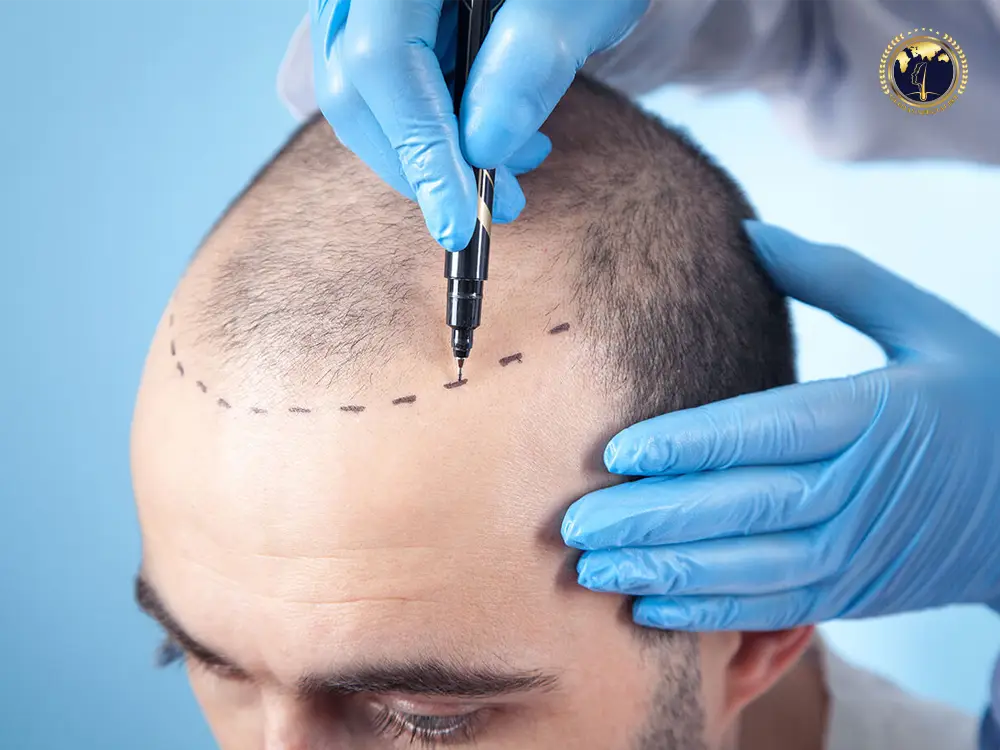
Hair transplant malaysia has become a popular solution for those experiencing hair loss, offering a permanent method of restoring hair. With advances in technology and techniques, the procedure has become more accessible. However, the cost can vary significantly depending on where you choose to undergo the surgery. In 2024, the cost of hair transplants in Southeast Asia—particularly in countries like Malaysia, Singapore, and Indonesia—remains a crucial consideration for potential patients. This article will explore the cost factors, provide a comparison among these countries, and offer insights into what you should expect if you’re considering this procedure. Factors Influencing Hair Transplant Costs in 2024 Several factors influence the cost of hair transplant surgery, and these can vary depending on the region, the clinic, and the specifics of your hair loss. Here are the key factors to consider: Type of Procedure: The most common hair transplant methods are Follicular Unit Extraction (FUE) and Follicular Unit Transplantation (FUT). FUE tends to be more expensive because it involves a more intricate and time-consuming process, extracting individual hair follicles from the donor area. FUT, which involves removing a strip of scalp from the donor area, is generally less costly but can leave a linear scar. Number of Grafts: The total cost largely depends on the number of grafts you need. Each graft typically contains 1-4 hair follicles, and the price per graft can range from a few cents to several dollars, depending on the country and clinic. Surgeon’s Expertise: Surgeons with extensive experience and a strong reputation may charge higher fees. Their expertise can significantly affect the success of the transplant and the natural appearance of the results. Location of the Clinic: The geographical location of the clinic plays a significant role in the cost. Clinics in major cities or in countries with a higher cost of living, like Singapore, typically charge more than those in places like Indonesia or Malaysia. Clinic Facilities: The quality and reputation of the clinic, including the technology and equipment used, also affect the price. High-end clinics with state-of-the-art facilities will generally charge more. Post-Surgery Care: Costs can also include follow-up consultations, medications, and any necessary aftercare treatments to ensure the best results. Cost of Hair Transplant in Malaysia in 2024 In Malaysia, the cost of a hair transplant in 2024 is relatively affordable compared to Western countries and even some neighboring Southeast Asian nations. The price per graft can range from $1.00 to $2.50 USD, depending on the clinic and the surgeon’s expertise. For a procedure requiring 2,000 grafts, you might expect to pay between $2,000 to $5,000 USD. Malaysia has become a preferred destination for medical tourists due to its combination of quality healthcare services and competitive pricing. Kuala Lumpur, the capital, hosts some of the country’s top clinics, offering advanced hair restoration techniques at a fraction of the cost compared to Western countries. Cost of Hair Transplant in Singapore in 2024 Singapore, known for its high standard of healthcare, is also one of the most expensive places in Southeast Asia for a hair transplant. In 2024, the cost per graft can range from $4.00 to $8.00 USD. For a typical procedure involving 2,000 grafts, this means you could be looking at a total cost of $8,000 to $16,000 USD. The high costs in Singapore reflect the country’s advanced medical facilities, highly trained surgeons, and stringent regulatory standards. While it is more expensive, patients in Singapore can expect top-tier care, cutting-edge technology, and a high success rate for their procedures. Cost of Hair Transplant in Indonesia in 2024 Indonesia offers some of the most affordable hair transplant options in Southeast Asia. In 2024, the cost per graft typically ranges from $0.50 to $1.50 USD, making it an attractive option for those looking for a budget-friendly solution. For a procedure involving 2,000 grafts, the total cost could be as low as $1,000 to $3,000 USD. Jakarta, the capital, is home to several reputable clinics offering hair transplant services. Although the costs are lower, many clinics in Indonesia still maintain high standards of care and offer modern FUE and FUT techniques. However, it is crucial to research and choose a clinic with a strong reputation to ensure satisfactory results. Cost Comparison: Malaysia, Singapore, and Indonesia When comparing the costs across these three countries, it’s clear that Singapore is the most expensive option, followed by Malaysia, with Indonesia being the most affordable. Here’s a breakdown of the estimated costs for a typical procedure involving 2,000 grafts: Malaysia: $2,000 to $5,000 USD Singapore: $8,000 to $16,000 USD Indonesia: $1,000 to $3,000 USD These figures highlight the substantial cost differences, which can influence where you choose to undergo the procedure. Patients must weigh the price against factors like the clinic’s reputation, the surgeon’s expertise, and their own personal comfort with traveling to and staying in a different country for the surgery. What to Expect During the Procedure Regardless of where you choose to have your hair transplant, the general process remains similar. Here’s what you can typically expect: Consultation: Your journey will begin with a consultation, where the surgeon assesses your hair loss, discusses your goals, and determines the number of grafts needed. Pre-Surgery Preparation: You’ll receive instructions on how to prepare for the surgery, which might include avoiding certain medications or cutting your hair short. Surgery Day: The procedure usually takes several hours, depending on the number of grafts. It is performed under local anesthesia, so you’ll be awake but won’t feel pain. Post-Surgery Care: After the surgery, you’ll receive instructions on how to care for your scalp, including how to wash your hair and what activities to avoid. Follow-up appointments will be scheduled to monitor your progress. Recovery and Results: It can take several months to see the full results, as the transplanted hair goes through a shedding phase before it begins to grow back. Final results are typically visible within 12 months. 5 FAQs About Hair Transplant Costs in 2024 How does the cost of a hair transplant in
FUE vs FUT: Which Hair Transplant Method Is Best for You in 2025?
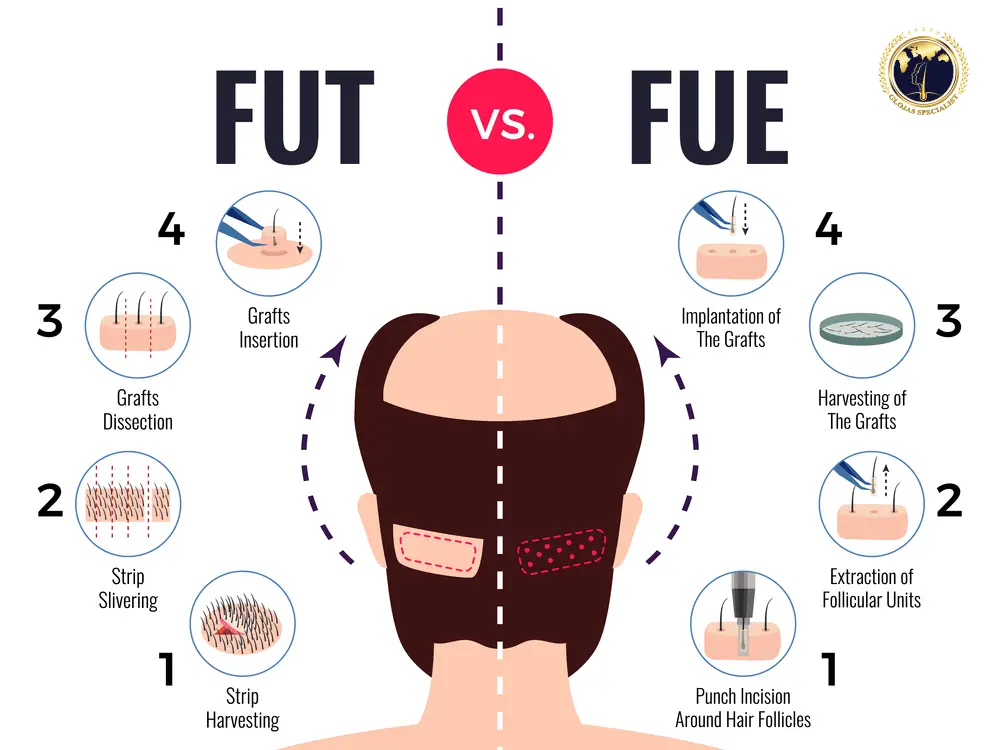
FUE vs FUT Hair Transplant: Which Technique Is Better? Hair loss can be a challenging experience, often leading individuals to seek permanent solutions like hair transplants. Among the most popular methods are Follicular Unit Extraction (FUE) and Follicular Unit Transplantation (FUT). Both techniques are effective in restoring hair, but they differ significantly in their procedures, recovery times, and outcomes. In this blog post, we’ll explore the differences between FUE hair transplant and FUT hair transplants, helping you make an informed decision about which method is best for you. What Is FUE Hair Transplant? Follicular Unit Extraction (FUE) is a modern hair transplant technique where individual hair follicles are extracted directly from the donor area, typically the back or sides of the scalp. These follicles are then implanted into the thinning or balding areas of the scalp. How FUE Works During an FUE procedure, a surgeon uses a micro-punch tool to remove hair follicles one by one. This method is minimally invasive and doesn’t require stitches, making it a popular choice for those looking for a less painful and quicker recovery process. Advantages of FUE Minimal Scarring: Since FUE involves extracting individual follicles, it leaves tiny, almost invisible scars that are easily concealed even with short hair. Faster Recovery: Patients typically experience a quicker recovery time with less discomfort compared to FUT. Flexibility in Hairstyle: The lack of noticeable scarring means patients can comfortably wear their hair short after recovery. Disadvantages of FUE Time-Consuming: The process of extracting individual follicles can be time-consuming, especially for larger areas. Cost: FUE is generally more expensive than FUT due to the meticulous nature of the procedure. What Is FUT Hair Transplant? Follicular Unit Transplantation (FUT), also known as the strip method, is a traditional hair transplant technique. In FUT, a strip of skin containing hair follicles is removed from the donor area. The strip is then dissected into individual follicular units, which are implanted into the balding areas. How FUT Works A surgeon removes a strip of scalp from the donor area, usually from the back of the head. The strip is then divided into smaller units under a microscope, and these units are implanted into the recipient area. The donor site is stitched up, leaving a linear scar. Advantages of FUT Efficient for Large Areas: FUT allows a greater number of follicles to be transplanted in one session, making it ideal for covering larger bald areas. Lower Cost: FUT is generally less expensive than FUE, making it a more cost-effective option for many patients. Disadvantages of FUT Visible Scarring: The linear scar from FUT can be visible if the hair is cut short, which may be a concern for some patients. Longer Recovery: Recovery from FUT can take longer and may involve more discomfort due to the incision and stitches. FUE vs FUT: Key Differences Explained Scarring One of the most significant differences between FUE and FUT is the type of scarring. FUE leaves multiple tiny dot scars, while FUT results in a single linear scar. If you prefer wearing short hairstyles, FUE might be the better option due to its minimal scarring. Procedure Time FUE is more time-consuming than FUT because each follicle is individually extracted. In contrast, FUT can be completed faster, especially when large areas need to be covered. Recovery FUE generally offers a quicker and less painful recovery, while FUT may involve more discomfort and a longer healing time due to the nature of the strip removal. Hair Density FUT often provides a higher yield of hair grafts in a single session, which can be advantageous for those needing significant coverage. However, FUE allows for more precision in placing the grafts, which can lead to a more natural appearance in some cases. Cost FUE is usually more expensive than FUT, reflecting the more labor-intensive nature of the procedure. However, the choice should be based on personal preferences and the advice of a qualified surgeon rather than cost alone. FUE vs FUT: How to Choose the Right Method The decision between FUE and FUT should be based on several factors, including the extent of hair loss, the desired outcome, and your personal preferences regarding scarring and recovery time. Consulting with a skilled and experienced hair transplant surgeon is crucial to determine the best approach for your specific needs. When to Choose FUE You want minimal scarring. You prefer a quicker recovery. You plan to wear short hairstyles. When to Choose FUT You need a large number of grafts. You’re looking for a more cost-effective option. Scarring isn’t a significant concern. FUE vs FUT: Final Thoughts Both FUE and FUT hair transplants offer effective solutions for hair restoration, but they cater to different needs and preferences. Understanding the key differences between these techniques can help you make an informed decision that aligns with your goals and lifestyle. Remember to consult with a professional to discuss your options and achieve the best possible outcome for your hair restoration journey. FUE vs FUT Hair Transplant FAQs 1. Which hair transplant method is more painful, FUE or FUT?Both FUE and FUT are performed under local anesthesia, so pain during the procedure is minimal. However, FUT may cause more discomfort during recovery due to the stitches and larger incision. 2. Can FUE and FUT be combined in one treatment?Yes, some surgeons may recommend a combination of FUE and FUT to maximize hair grafts and achieve optimal results, especially in patients with extensive hair loss. 3. How long does it take to see results after a hair transplant?Initial hair growth can be seen within 3 to 4 months, with full results typically visible after 12 to 18 months as the transplanted hair gradually thickens. 4. Will the transplanted hair fall out?It’s normal for the transplanted hair to shed within the first few weeks after the procedure. However, this is temporary, and new hair will begin to grow in its place. 5. Is one hair transplant session enough for complete coverage?The number of sessions required depends
5 Effective Solutions for Female Hair Thinning at GLOJAS Clinic
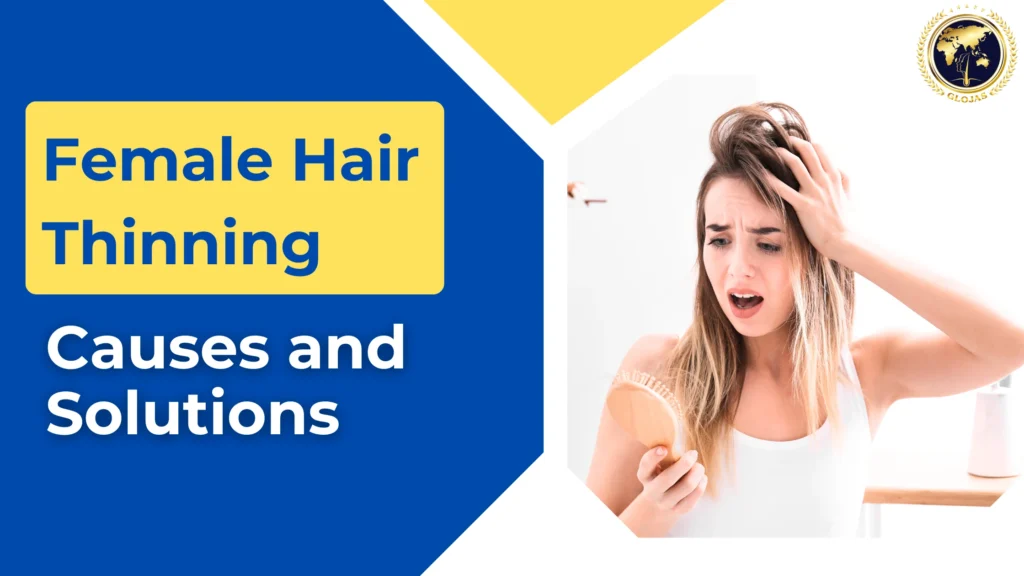
Female hair thinning is a common yet distressing issue that affects many women, impacting their confidence and self-esteem. At GLOJAS Clinic, we understand the emotional and physical implications of hair thinning and offer a range of cutting-edge treatments tailored to your needs. In this article, we discuss five effective solutions for female hair thinning available at our clinic, ensuring you find the right approach to restore your hair’s volume and vitality. 1. Platelet-Rich Plasma (PRP) Therapy One of the most promising treatments for female hair thinning is Platelet-Rich Plasma (PRP) therapy. This innovative procedure involves extracting a small amount of your blood, processing it to concentrate the platelets, and injecting it into the scalp. The growth factors in PRP stimulate hair follicles, encouraging new hair growth and strengthening existing hair. At GLOJAS Clinic, our skilled specialists use advanced techniques to maximise the effectiveness of PRP therapy, making it a popular choice for women experiencing hair thinning. 2. Low-Level Laser Therapy (LLLT) Low-Level Laser Therapy (LLLT) is another highly effective solution for female hair thinning. This non-invasive treatment uses red light wavelengths to penetrate the scalp, increasing blood flow and stimulating hair follicles. LLLT has been shown to improve hair density and thickness, making it an excellent option for those looking to combat hair thinning. At GLOJAS Clinic, we offer state-of-the-art LLLT devices that are safe, painless, and effective for all hair types. 3. Hair Transplantation For women with significant hair thinning or bald patches, hair transplantation may be the most effective solution. This procedure involves transplanting hair follicles from a donor area (usually the back of the scalp) to the thinning or balding areas. At GLOJAS Clinic, we utilise the latest FUE (Follicular Unit Extraction) technique, which ensures natural-looking results with minimal scarring. Our experienced surgeons meticulously plan and execute each transplant, ensuring the best possible outcome for every patient. 4. Topical Treatments and Medications In addition to medical procedures, GLOJAS Clinic offers a range of topical treatments and medications to address female hair thinning. Minoxidil, a topical solution, is one of the most widely used treatments for stimulating hair growth and slowing down hair loss. Our experts also prescribe other medications, such as finasteride, which can help manage hair thinning in women by blocking the hormone responsible for hair loss. These treatments are often used in combination with other therapies for optimal results. 5. Nutritional and Lifestyle Guidance A holistic approach to treating female hair thinning includes addressing nutritional and lifestyle factors. At GLOJAS Clinic, we offer personalised consultations to assess your diet, stress levels, and overall health. Nutrient deficiencies, stress, and hormonal imbalances can all contribute to hair thinning. Our experts provide tailored advice on dietary changes, supplements, and lifestyle modifications to support healthy hair growth from within. Why Choose GLOJAS Clinic for Female Hair Thinning? GLOJAS Clinic is renowned for its expertise in treating hair loss and thinning in women. Our comprehensive approach combines the latest medical treatments with personalised care, ensuring you receive the most effective solutions for your specific condition. Our team of board-certified dermatologists and hair restoration specialists are dedicated to helping you achieve your hair goals. We understand that female hair thinning can be a sensitive issue, and we prioritise patient comfort and confidentiality. At GLOJAS Clinic, we take the time to understand your concerns and customise our treatments to suit your needs. With our state-of-the-art facilities and compassionate care, we are committed to providing you with the best possible experience. If you’re struggling with female hair thinning, don’t hesitate to reach out to GLOJAS Clinic. Our team is here to guide you through every step of your hair restoration journey, offering expert advice and advanced treatments. Contact us today to schedule a consultation and take the first step towards revitalising your hair and boosting your confidence. Facebook Twitter LinkedIn Reddit Pinterest WhatsApp
Understanding Alopecia: Types, Causes, and Treatment Options
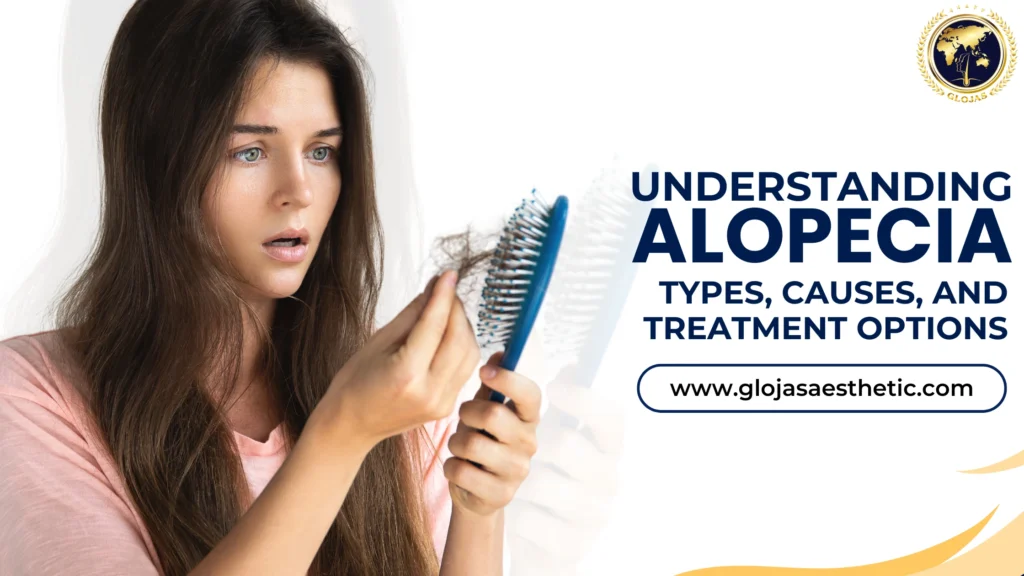
Alopecia, often referred to as hair loss, is a condition that affects people of all ages and genders. While it can be a distressing experience, it’s important to understand the different types of alopecia and available treatment options. This blog delves into the world of alopecia, explaining its various forms and highlighting the expertise offered by GLOJAS Clinic in addressing this condition. Types of Alopecia: A Spectrum of Hair Loss Alopecia encompasses a range of hair loss conditions: Alopecia Areata: This autoimmune disorder causes patchy hair loss on the scalp, and sometimes the eyebrows, eyelashes, or other parts of the body. Telogen Effluvium: This condition results in excessive hair shedding due to triggers like stress, illness, or hormonal changes. Androgenetic Alopecia: Commonly known as male or female pattern baldness, this hereditary condition leads to gradual hair thinning. Alopecia Totalis: This involves complete hair loss on the scalp. Alopecia Universalis: This is the most severe form, resulting in the loss of all body hair. Unraveling the Causes of Alopecia: Complex and Multifaceted The exact cause often remains elusive, but several factors can contribute to its development: Genetics: A family history of hair loss increases the risk of developing certain types of alopecia. Autoimmune Disorders: Alopecia areata is an autoimmune condition where the body attacks hair follicles. Hormonal Imbalances: Hormonal changes can trigger hair loss, especially in women. Stress: Significant emotional or physical stress can contribute to hair loss. Medications and Medical Conditions: Certain medications and underlying health conditions can cause hair loss as a side effect. Coping with Hair Loss: Emotional and Psychological Impact Hair loss can have a profound impact on a person’s emotional well-being: Self-esteem: Hair loss can significantly affect self-confidence and body image. Social Anxiety: Individuals with alopecia may experience social withdrawal due to fear of judgment or stares. Depression: The emotional stress of hair loss can lead to depression and other mental health challenges. Treatment Options: Finding Solutions and Support While there’s no definitive cure for all types of alopecia, various treatments can help manage the condition and improve appearance: Medications: Topical minoxidil and oral medications like finasteride can be effective for some types of hair loss, especially androgenetic alopecia. Corticosteroids: Corticosteroid injections or creams can help with inflammation in alopecia areata. Hair Transplants: For suitable candidates, hair transplants can restore hair in areas of permanent hair loss. Low-Level Laser Therapy (LLLT): This non-invasive treatment might stimulate hair growth in some cases. Why Choose GLOJAS Clinic for Alopecia Treatment and Support? At GLOJAS Clinic, we understand the emotional and psychological impact of hair loss. Our team is committed to providing comprehensive care and support to individuals experiencing hair loss. Here’s what sets us apart: Experienced Dermatologists: Our team comprises highly qualified dermatologists with expertise in diagnosing and treating various types of alopecia. Personalized Treatment Plans: We offer customized treatment plans based on the specific type of alopecia, its severity, and individual needs. Emotional Support and Counseling: We recognize the emotional toll of hair loss and provide support services to help you cope. Advanced Treatment Options: We offer a range of treatment options, including medications, laser therapy, and hair transplants. Focus on Patient Well-being: Our goal is to improve not only your appearance but also your overall well-being. Alopecia can be a challenging experience, but it’s important to remember that you’re not alone. With the right support and treatment options, you can manage the condition and regain confidence. GLOJAS Clinic is here to partner with you on your journey. Schedule a consultation with our team today. We can assess your hair loss, discuss treatment options, and provide emotional support. Don’t let alopecia define you – take the first step towards regaining confidence and embracing your unique beauty with GLOJAS Clinic! Facebook Twitter LinkedIn Reddit Pinterest WhatsApp
Tanam Jambang di Klinik Glojas: Solusi Terbaik untuk Meningkatkan Maskulin Lelaki
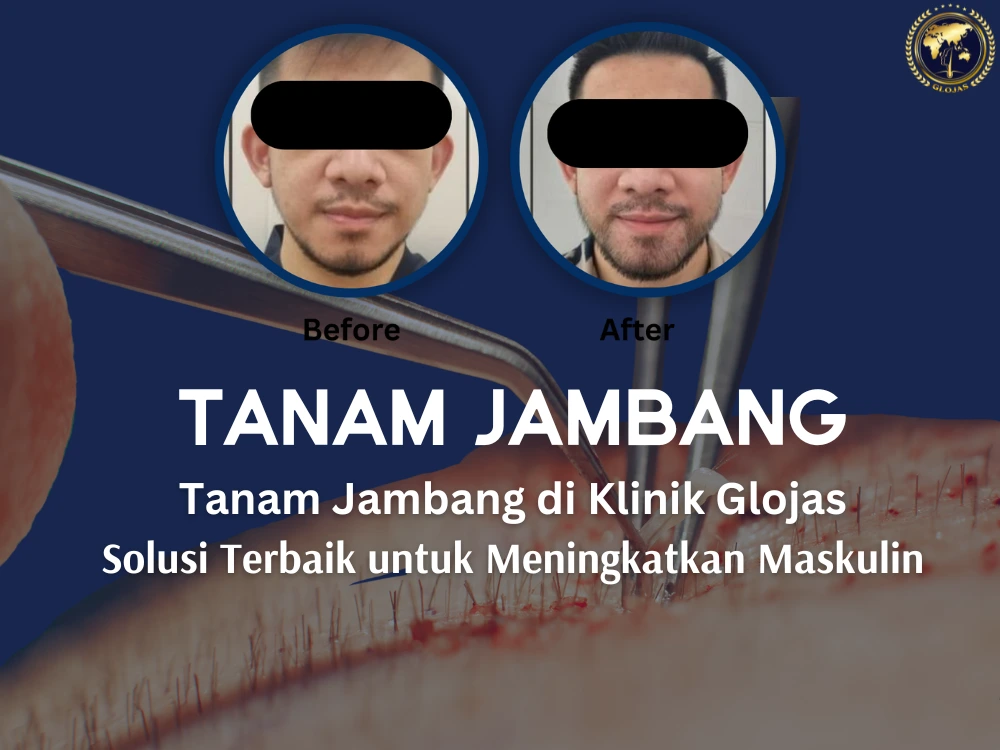
Memahami Apa itu Tanam Jambang: Klinik Glojas Mengubah Anda Menjadi Lebih Maskulin Tanam Jambang merupakan satu solusi yang semakin terkenal di Malaysia bagi lelaki yang ingin meningkatkan penampilan maskulin mereka. Ini kerana, jambang yang penuh dan terurus dengan baik sering dianggap sebagai simbol maskulin dan kepercayaan diri. Namun, tidak semua lelaki dikurniakan dengan jambang yang tebal dan menyeluruh. Bagi mereka yang menghadapi masalah kekurangan rambut pada kawasan jambang, Klinik Glojas menawarkan penyelesaian ideal melalui prosedur tanam jambang. Klinik Glojas, salah satu pusat kecantikan terkemuka di Malaysia, kini menawarkan penyelesaian terkini untuk masalah kekurangan jambang dengan teknik tanam jambang atau lebih dikenali sebagai “hair transplant”. Dengan kemajuan teknologi dan pengalaman pakar-pakar mereka, Klinik Glojas menjadi pilihan utama bagi individu yang ingin mendapatkan jambang yang lebih penuh dan sihat. Apa Itu Tanam Jambang? Tanam jambang adalah prosedur pembedahan kosmetik yang melibatkan pemindahan folikel rambut dari kawasan penderma yang kebiasaanya di bahagian belakang kepala ke kawasan jambang yang memerlukan rambut tambahan. Teknik ini bertujuan untuk meningkatkan kepadatan jambang dan memperbaiki bentuk serta ketebalannya. Kenapa Perlu Memilih Klinik Glojas untuk Tanam Jambang? Teknologi Terkini: Klinik Glojas menggunakan teknologi terkini dan canggih dalam prosedur tanam jambang. Teknik seperti Follicular Unit Extraction (FUE) dan Follicular Unit Transplantation (FUT) digunakkan untuk memastikan hasil yang optimal. Teknologi ini membolehkan pemindahan folikel rambut dilakukan dengan lebih tepat dan kurang invasif. Pakar Berpengalaman: Klinik Glojas mempunyai pasukan pakar yang berpengalaman dan terlatih dalam bidang pembedahan rambut dan dermatologi. Mereka memiliki pengetahuan mendalam tentang anatomi rambut dan teknik terbaru, menjadikan mereka pilihan terbaik untuk rawatan tanam jambang. Pendekatan Peribadi: Setiap individu mempunyai keperluan yang unik, dan Klinik Glojas memahami kepentingan pendekatan peribadi. Konsultasi awal akan membantu dalam memahami jangkaan anda serta menentukan pelan rawatan yang paling sesuai untuk mendapatkan hasil yang memuaskan. Hasil Yang Semula Jadi: Dengan menggunakan teknik dan teknologi canggih, hasil akhir dari tanam jambang di Klinik Glojas kelihatan semula jadi dan sesuai dengan wajah anda. Rambut yang dipindahkan akan tumbuh secara semula jadi seperti rambut asli, memberikan penampilan jambang yang lebih penuh dan teratur. View this post on Instagram A post shared by GLOJAS HAIR TRANSPLANT SPECIALIST MALAYSIA (@fuehairtransplantmalaysia) Proses Tanam Jambang Konsultasi Awal: Sesi konsultasi akan diadakan untuk menilai keadaan jambang anda dan berbincang tentang hasil yang anda idamkan serta keperluan peribadi anda. Penilaian kesihatan juga akan dilakukan untuk memastikan anda adalah calon yang sesuai untuk prosedur ini atau pun tidak. Persediaan: Sebelum prosedur dimulakan, kawasan penderma dan penerima akan disiapkan. Ini termasuk pembersihan dan persediaan kawasan yang akan dipindahkan. Prosedur Tanam Jambang: Prosedur dilakukan di bawah anestesia tempatan untuk memastikan anda selesa dan tidak mengalami kesakitan. Folikel rambut akan dipindahkan dari kawasan penderma ke kawasan yang memerlukan jambang. Pemulihan: Selepas prosedur, mungkin terdapat sedikit bengkak atau ketidakselesaan, tetapi ini biasanya bersifat sementara. Arahan pemulihan akan diberikan, termasuk cara menjaga kawasan yang baru dipindahkan dan produk yang disarankan untuk penjagaan selepas prosedur. Pakar Tanam Rambut di GLOJAS Kesimpulan Tanam jambang di Klinik Glojas merupakan pilihan unggul bagi lelaki yang ingin meningkatkan penampilan jambang mereka. Dengan teknologi terkini, pasukan pakar yang berpengalaman yang di yang diketuai oleh Professor Dato` Dr JasG telah berpengalaman dan kemahiran lebih dari 26 tahun akan memastikan pelanggan kami berpuas hati dengan hasil yang semula jadi. Klinik Glojas juga menawarkan penyelesaian yang berkesan untuk mendapatkan jambang yang lebih tebal dan terurus. Untuk maklumat lanjut dan untuk menjadualkan sesi konsultasi, hubungi Klinik Glojas hari ini dan mulakan perjalanan anda ke jambang yang lebih menawan. BACA ARTIKEL : Tanam Rambut Malaysia , Kebaikan Stem Cell
5 Powerful Reasons GLOJAS Clinic Offers the Best Treatment for Baldness
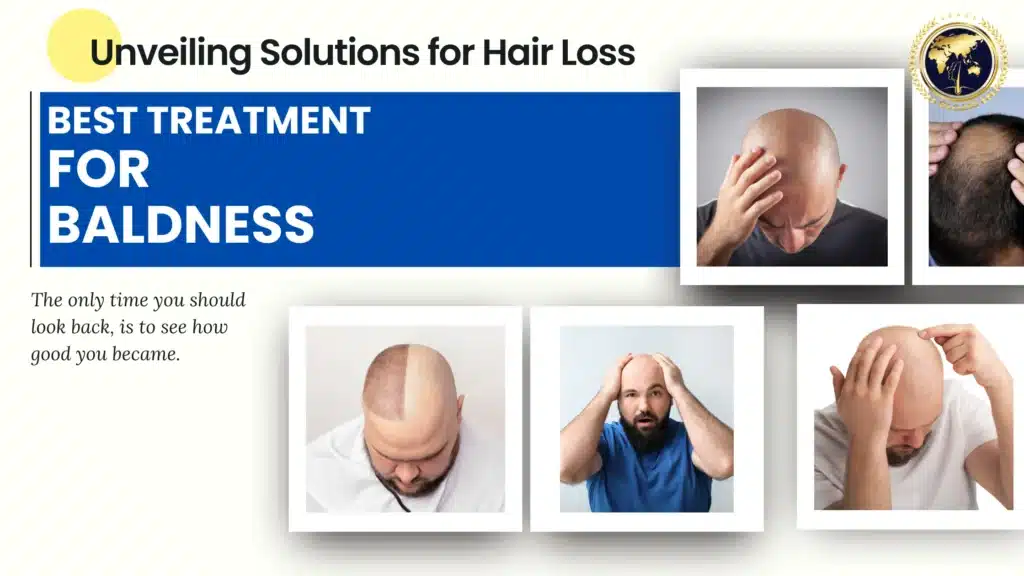
Best Treatment For Baldness – Hair loss can be a distressing issue for both men and women, impacting self-esteem and overall well-being. Fortunately, advancements in hair restoration have led to a range of treatment options. This blog delves into the best treatments for hair loss, exploring their effectiveness and suitability for different individuals. Additionally, it highlights why Hair Transplant Malaysia Clinic can be your ideal partner in achieving a fuller head of hair. Understanding the Causes of Hair Loss: Identifying the Culprit Before exploring treatment options, it’s essential to understand the underlying causes of hair loss: Hereditary Hair Loss: This is the most common type, affecting both men and women. It’s influenced by genetics and hormones. Telogen Effluvium: This temporary hair loss is often triggered by stress, illness, or hormonal changes. Alopecia Areata: This autoimmune condition causes patchy hair loss on the scalp or body. Medications and Medical Conditions: Certain medications and underlying health conditions can contribute to hair loss. Exploring Treatment Options: Finding the Right Solution Several treatments can address hair loss, depending on the underlying cause and severity: Medications: Minoxidil and finasteride are FDA-approved medications that can slow hair loss or promote regrowth in some cases. Low-Level Laser Therapy (LLLT): This non-invasive treatment uses low-level lasers to stimulate hair follicles and promote hair growth. Hair Transplants: This surgical procedure involves transplanting healthy hair follicles from a donor area to the balding area. Platelet-Rich Plasma (PRP) Therapy: This involves injecting concentrated platelets into the scalp to stimulate hair growth. Choosing the Treatment for You: Best Treatment For Baldness Best Treatment For Baldness depends on individual factors: Cause of Hair Loss: Identifying the underlying cause is crucial for selecting the appropriate treatment. Severity of Hair Loss: The extent of hair loss will determine the most suitable option. Desired Outcome: Consider your expectations and desired results when choosing a treatment. Why Choose Hair Transplant Malaysia Clinic for Your Hair Loss Journey? Hair Transplant Malaysia Clinic offers a comprehensive approach to hair loss, providing a range of treatments tailored to individual needs. Here’s why we stand out: Experienced Hair Restoration Specialists: Our team comprises highly qualified doctors and surgeons with expertise in hair loss treatments. Personalized Treatment Plans: We offer customized treatment plans based on your hair loss pattern, medical history, and desired outcome. Advanced Technology and Techniques: We utilize the latest technology and techniques for effective and minimally invasive procedures. Comprehensive Hair Loss Solutions: We provide a range of treatments, including medications, laser therapy, and hair transplants, to address various hair loss concerns. Focus on Patient Satisfaction: Our commitment to patient care ensures a comfortable and supportive experience throughout your hair restoration journey. Hair loss can be a challenging experience, but with the right treatment and support, you can regain a fuller head of hair and boost your confidence. Hair Transplant Malaysia Clinic is dedicated to helping you achieve your hair restoration goals. Schedule a consultation with our team today. We can assess your hair loss, discuss treatment options, and create a personalized plan to help you achieve a thicker, more confident you. Don’t let hair loss define you – take the first step towards a fuller head of hair with Hair Transplant Malaysia Clinic! Facebook Twitter LinkedIn Reddit Pinterest WhatsApp
Kebaikan Stem Cell : Keajaiban Baru dalam Rawatan Rambut

Apa itu Rawatan Stem Cell? Kebaikan Stem Cell – Rawatan Sel Stem Rambut, khususnya menggunakan sistem Regenera Activa, melibatkan proses di mana doktor ‘harvest’ sejumlah kecil sel stem rambut yang sihat anda. Stem Cell ini kemudiannya diproses untuk mengasingkan dan memekatkan. Setelah diproses, sel stem yang diproses disuntik ke kawasan kulit kepala yang mengalami keguguran rambut. Rawatan ini bertujuan untuk menggantikan atau menjana semula sel yang rosak atau mati, merangsang pertumbuhan rambut dan mengurangkan keguguran rambut. Alamat : Glomac Galeria Hartamas, B-G, 05, Jalan 26a/70a, Desa Sri Hartamas, 50480 Wilayah Persekutuan, Wilayah Persekutuan Kuala Lumpur Dapatkan Arah Telefon : 012-989 1915 Laman Social : Facebook Youtube Instagram Kebaikan Stem Cell dalam Rawatan Rambut Selain menangani keguguran rambut, terapi rambut sel stem memberikan beberapa kebaikan lain: Meningkatkan Rambut yang Halus dan Rosak: Rawatan sel stem dapat meningkatkan ketebalan dan kecergasan rambut yang halus dan rosak, mengembalikannya kepada keadaan yang lebih sihat. Memperkukuhkan Folikel Rambut: Dengan menggalakkan pertumbuhan folikel rambut, terapi ini membantu untuk menguatkan dan meningkatkan ketahanan terhadap kerosakan lebih lanjut. Memperkukuhkan Rambut yang Sedia Ada: Sel stem juga dapat memperkukuhkan rambut yang sedia ada dan mengelakkan rambut patah atau gugur. Menggalakkan Pertumbuhan Rambut Semula Jadi: Sifat regeneratif sel stem menggalakkan pertumbuhan semula jadi rambut dan menghasilkan rambut yang lebih penuh serta padat. Invasif Minimum: Rawatan rambut sel stem adalah invasif minimum berbanding pilihan pembedahan lain, mengurangkan ketidakselesaan dan mempunyai masa pemulihan yang singkat untuk pesakit. Keputusan Positif Dalam Sebulan:Ramai pesakit mengalami peningkatan pertumbuhan dan kualiti rambut yang ketara dalam tempoh yang singkat, biasanya dalam sebulan selepas menjalani rawatan. Penyelesaian yang Berkesan untuk Keguguran Rambut: Terapi sel stem menawarkan penyelesaian yang boleh dipercayai untuk keguguran rambut, memberi pesakit keyakinan baru dan kepuasan dengan penampilan mereka. https://www.youtube.com/watch?v=t_GSn9iCtes Pakar Tanam Rambut di GLOJAS View this post on Instagram A post shared by GLOJAS HAIR TRANSPLANT SPECIALIST MALAYSIA (@fuehairtransplantmalaysia) Bagaimana Rawatan Stem Cell Berfungsi? Rawatan Stem Cell ialah prosedur canggih yang bertujuan untuk mengatasi keguguran rambut dengan menggunakan regeneratif sel stem. Proses ini bermula dengan pemeriksaan menyeluruh terhadap kulit kepala pesakit oleh doktor estetik yang berpengalaman dan berkelayakan menggunakan mikroskop rambut untuk menilai keadaan folikel rambut. Selepas itu, doktor akan ‘harvest’ dengan lembut dan tanpa sakit folikel rambut yang sihat dari kawasan kecil kulit kepala pesakit berukuran 2mm, yang bersamaan dengan satu unit graf. Rawatan ini dilakukan selepas bius tempatan untuk memastikan tiada pendarahan atau ketidakselesaan. Folikel rambut yang telah ‘harvest’ kemudiannya diletakkan ke dalam mesin berteknologi tinggi untuk ditapis dan dipekatkan. Sel stem yang diproses ini kemudiannya disuntik ke dalam kawasan kulit kepala yang botak menggunakan jarum terbaik untuk mengurangkan ketidakselesaan. Pendekatan yang tepat dan komprehensif ini menggunakan penyembuhan semula jadi dari badan untuk merangsang pertumbuhan rambut, membaiki folikel rambut yang rosak, dan mengurangkan keguguran rambut serta menawarkan penyelesaian invasif minimum dan berkesan untuk pemulihan rambut. Kesan Sampingan Rawatan Rambut Stem Cell Rawatan rambut sel stem biasanya dikaitkan dengan kesan sampingan yang minima atau tiada kesan kerana mengunakan sel stem pesakit sendiri dan ini menghapuskan isu keserasian. Pesakit biasanya tidak mengalami kesakitan, bengkak, pendarahan, parut, atau komplikasi lain. Tindak balas yang wujud ini sangat mengurangkan risiko tindak balas buruk dan ini menjadikan rawatan rambut sel stem sebagai pilihan yang selamat dan diterima dengan baik untuk menangani keguguran rambut. Kesimpulan Penggunaan Srem Cell dalam rawatan rambut adalah satu inovasi yang menjanjikan dengan banyak kebaikan, termasuk merangsang pertumbuhan rambut baru, memperbaiki kualiti rambut, dan menawarkan penyelesaian jangka panjang untuk masalah rambut. Dengan teknologi yang terus berkembang dan penyelidikan yang berterusan, sel stem berpotensi untuk menjadi salah satu pilihan utama dalam rawatan masalah rambut di masa depan. Bagi mereka yang mengalami masalah rambut gugur atau kebotakan, rawatan Stem Cell boleh menjadi alternatif yang berkesan dan memberikan harapan baru untuk mendapatkan rambut yang sihat dan penuh keyakinan. Dapatkan Konsultasi Percuma Sekarang! BACA ARTIKEL : Ubat Rambut Gugur , Masalah Rambut Botak Facebook Twitter LinkedIn Pinterest Reddit WhatsApp
Tanam Rambut Malaysia: Solusi Terbaik untuk Masalah Keguguran Rambut

Penyelesaian Tanam Rambut di Malaysia Keguguran rambut adalah masalah yang kerap dihadapi oleh ramai individu di Malaysia. Sama ada disebabkan oleh faktor genetik, stres, pemakanan yang tidak seimbang, atau keadaan kesihatan tertentu. Kehilangan rambut boleh mempengaruhi keyakinan diri dan kesejahteraan seseorang. Untuk mengatasi masalah ini, ramai orang beralih kepada kaedah tanam rambut, satu prosedur kosmetik yang semakin popular di Malaysia. Apa Itu Tanam Rambut? Tanam rambut atau “hair transplant” adalah prosedur pembedahan kosmetik yang bertujuan untuk mengembalikan rambut yang hilang dengan memindahkan folikel rambut dari kawasan donor (biasanya di bahagian belakang kepala) ke kawasan yang mengalami kekurangan rambut atau kebotakan. Teknik ini direka untuk memberikan hasil yang lebih semula jadi berbanding dengan rawatan lain seperti ubat-ubatan atau topikal. Proses Tanam Rambut Di Malaysia, prosedur tanam rambut umumnya dilakukan menggunakan dua teknik utama: Teknik Follicular Unit Transplantation (FUT): Dalam teknik ini, sekeping kulit kepala yang mengandungi folikel rambut diambil dari kawasan donor. Folikel rambut yang diambil kemudian dipecahkan kepada unit-unit kecil dan dipindahkan ke kawasan botak. Teknik Follicular Unit Extraction (FUE): Teknik ini melibatkan pengambilan folikel rambut secara individu dari kawasan donor menggunakan alat khas. Folikel-folikel ini kemudian dipindahkan ke kawasan botak tanpa memerlukan jahitan. View this post on Instagram A post shared by GLOJAS AESTHETIC SPECIALIST (@glojasaesthetic) Manfaat Tanam Rambut Hasil Semulajadi: Dengan teknik yang betul, hasil tanam rambut boleh kelihatan sangat semula jadi, kerana folikel rambut yang dipindahkan akan terus tumbuh seperti rambut biasa. Kekal dalam Jangka Panjang: Rambut yang ditanam biasanya kekal selamanya, selagi folikel yang dipindahkan adalah sihat dan kawasan donor kekal utuh. Minimalkan Kesan Kesan Sampingan: Berbanding dengan rawatan topikal atau ubat-ubatan, tanam rambut mempunyai risiko kesan sampingan yang lebih rendah dan boleh memberikan hasil yang lebih memuaskan. Pertimbangan Sebelum Menjalani Prosedur Kelayakan Individu: Tidak semua orang sesuai untuk prosedur ini. Kelayakan bergantung pada faktor seperti tahap kebotakan, keadaan kesihatan keseluruhan, dan ketebalan folikel rambut di kawasan donor. Kos: Kos tanam rambut di Malaysia boleh bervariasi bergantung pada klinik, teknik yang digunakan, dan jumlah rambut yang perlu dipindahkan. Pastikan anda memahami semua kos yang terlibat sebelum memutuskan. Pemulihan: Proses pemulihan selepas tanam rambut memerlukan penjagaan yang teliti. Anda mungkin perlu mengambil cuti dari aktiviti harian dan mengikuti arahan doktor untuk memastikan hasil yang terbaik. Pilih Klinik yang Berpengalaman: Pilih klinik dan pakar yang berpengalaman dan mempunyai reputasi yang baik untuk memastikan prosedur dilakukan dengan selamat dan berkesan. Kesimpulannya Tanam rambut adalah salah satu pilihan yang efektif untuk mengatasi masalah keguguran rambut dan kebotakan, terutamanya bagi mereka yang mengalami masalah ini dengan serius. Di Malaysia, banyak klinik yang menawarkan perkhidmatan ini dengan teknologi terkini dan pakar yang berkelayakan. Jika anda mempertimbangkan untuk menjalani prosedur ini, penting untuk melakukan penyelidikan yang mendalam, berbincang dengan pakar, dan memahami semua aspek yang terlibat untuk memastikan hasil yang memuaskan dan selamat. Dengan kemajuan dalam teknologi perubatan, tanam rambut kini menjadi solusi yang lebih accessible dan berkesan untuk mereka yang ingin mengembalikan keyakinan diri melalui penampilan rambut yang lebih penuh dan semulajadi. Di glojas, kumpulan pakar kami yang diketuai oleh Professor Dato` Dr JasG yang telah berpengalaman dan kemahiran lebih dari 26 tahun akan memastikan pelanggan kami berpuas hati. BACA ARTIKEL : Masalah Rambut Botak Facebook Twitter LinkedIn Reddit Pinterest WhatsApp